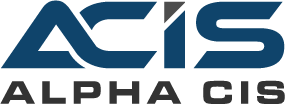Picture this: It’s Monday morning, and you’re staring at your company’s IT expenses from last month. The number makes your coffee taste bitter. Between software licenses, hardware repairs, and that emergency server fix that costs more than your car payment, you’re wondering if there’s a better way to manage your technology budget without sacrificing the tools your team needs to succeed.
You’re not alone. I’ve worked with dozens of Atlanta small businesses over the past decade, and the story is always the same. Business owners know they need technology to compete, but they’re tired of feeling like their IT budget is a black hole that swallows money without showing clear returns.
The good news? Smart businesses across Atlanta are discovering that cutting IT costs doesn’t mean cutting corners. It means making strategic decisions that improve performance while reducing expenses. Let me show you exactly how they’re doing it.
Key Takeaways
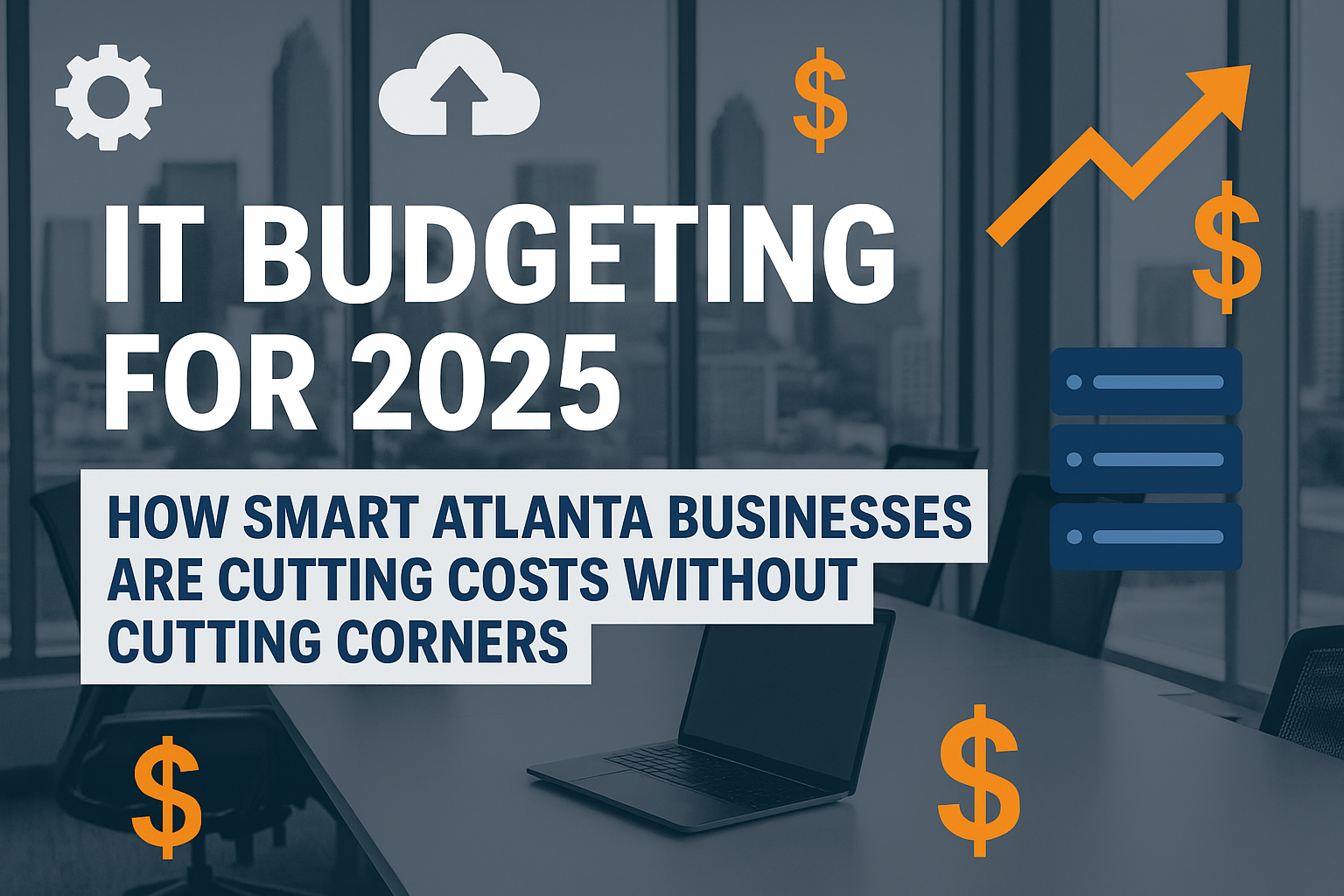
Ready to Take IT Off Your Plate?
Stop worrying about downtime, security risks, or endless IT frustrations. AlphaCIS is the trusted IT partner for small and mid-sized businesses in Metro Atlanta, keeping systems secure, connected, and running the way they should every day.
Whether it’s preventing costly outages, protecting your data, or giving your team unlimited support, we make sure technology helps your business grow instead of holding it back.
📅 Book Your Free Consultation- Strategic cloud migration can reduce IT infrastructure costs by 20-40% while improving reliability and scalability
- Preventive IT maintenance costs 5x less than reactive emergency repairs and downtime
- Right-sizing software subscriptions and eliminating redundant tools typically saves businesses 15-30% on annual software costs
- Managed IT services often cost less than hiring full-time IT staff while providing access to enterprise-level expertise
- Energy-efficient hardware upgrades pay for themselves within 18-24 months through reduced power consumption and maintenance costs
The Real Cost of Reactive IT Management
Last year, I met Sarah, who owns a 25-person marketing agency in Buckhead. She was spending nearly $8,000 per month on IT-related expenses, but her team was still struggling with slow computers, unreliable internet, and software that crashed at the most inopportune times.
“I felt like I was throwing money at problems instead of preventing them,” Sarah told me during our first consultation. “Every month, something new would break, and I’d have to choose between paying for expensive emergency repairs or watching my team’s productivity suffer.”
Sarah’s situation is incredibly common among small businesses. Reactive IT management – the approach of fixing things only after they break – creates a vicious cycle:
The Reactive IT Cost Spiral
- Equipment fails unexpectedly → Emergency repair costs 3-5x more than scheduled maintenance
- Downtime hurts productivity → Lost revenue often exceeds the repair costs
- Stress leads to quick fixes → Band-aid solutions create bigger problems later
- Budget gets stretched thin → No money left for strategic improvements
- Cycle repeats → Each incident becomes more expensive than the last
The hidden costs add up quickly. According to recent studies, small businesses lose an average of $8,600 per hour during IT downtime. For a company like Sarah’s, even a four-hour outage could cost more than an entire year of preventative maintenance.
Challenge 1: Outdated Infrastructure Draining Your Budget
The Problem: Legacy Systems Are Money Pits
Many Atlanta businesses are running on technology that’s 5-7 years old or older. While these systems might still “work,” they’re costing significantly more to maintain than modern alternatives.
Here’s what outdated infrastructure really costs:
– Higher energy bills: Old servers and computers use 40-60% more electricity
– Frequent repairs: Aging hardware fails more often, and parts become expensive
– Security vulnerabilities: Older systems can’t run current security software
– Productivity losses: Slow performance wastes employee time every day
– Compliance risks: Outdated systems may not meet current industry standards
The Solution: Strategic Infrastructure Modernization
The key is strategic replacement, not wholesale overhaul. Smart businesses prioritize upgrades based on ROI and business impact.
Start with your biggest pain points:
- Identify your most problematic systems – Which devices or servers cause the most downtime?
- Calculate the true cost – Include energy, repairs, lost productivity, and security risks
- Research modern alternatives – Look for energy-efficient, reliable replacements
- Plan the upgrade timeline – Spread costs over 12-18 months to manage cash flow
- Factor in tax benefits – Many technology purchases qualify for immediate depreciation
Real Example: A law firm in Midtown replaced its 6-year-old server with a modern, energy-efficient model. The upfront cost was $4,500, but they saved $200/month in electricity, eliminated $1,800/year in maintenance costs, and reduced backup times from 4 hours to 30 minutes. The upgrade paid for itself in 14 months.
Challenge 2: Cloud Migration Confusion and Costs
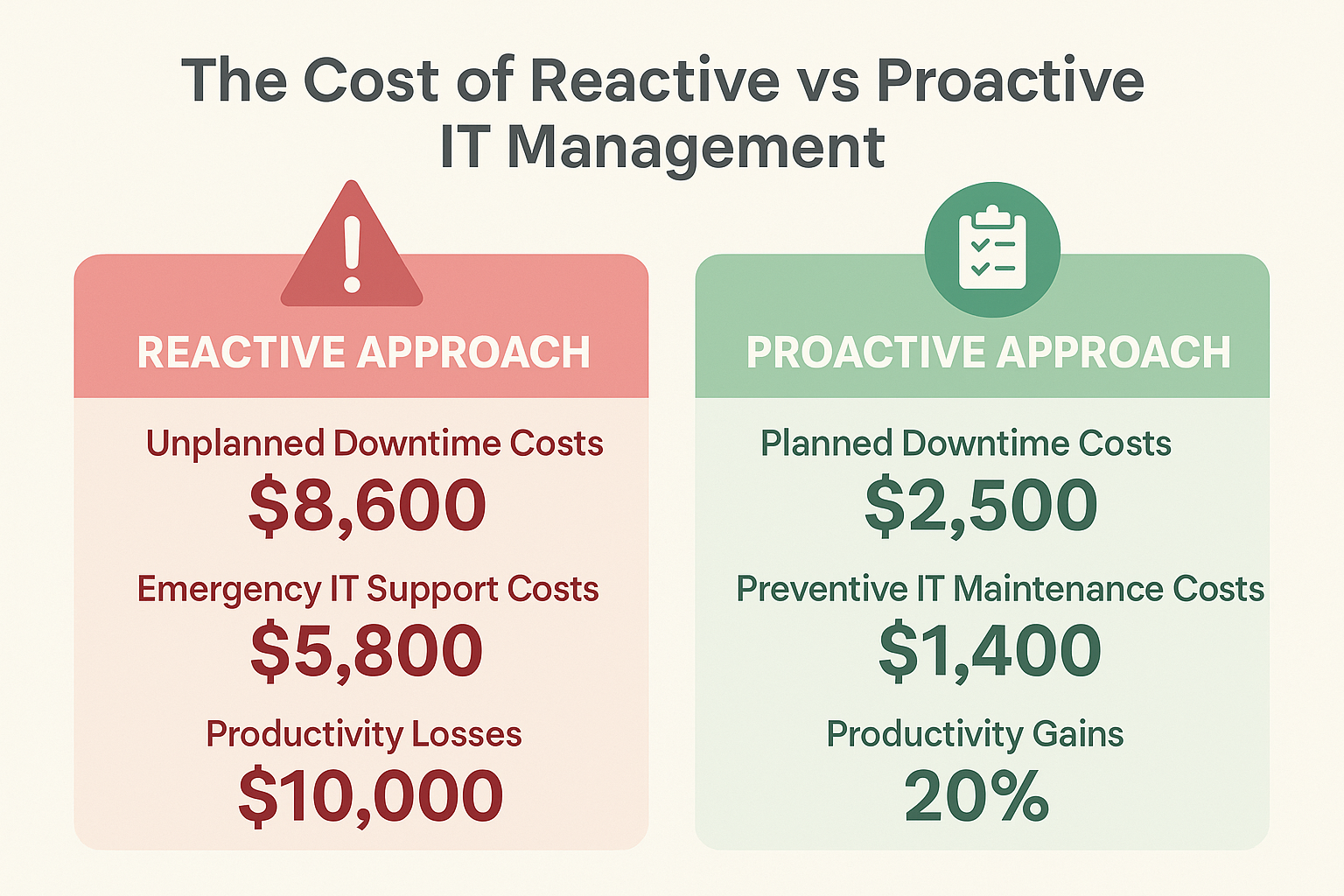
The Problem: Misunderstanding Cloud Economics
I hear this concern constantly: “Cloud services are just another monthly expense that adds up over time.” Many business owners assume that moving to the cloud will increase their IT costs, so they stick with expensive on-premise solutions.
This thinking misses the bigger picture. Cloud migration isn’t about trading ownership for rental – it’s about trading fixed costs and risks for predictable, scalable expenses.
The Hidden Costs of On-Premise Infrastructure
When you factor in all the costs of maintaining your own servers and software:
– Hardware purchases and regular replacements (every 3-5 years)
– Software licensing and annual maintenance fees
– Energy costs for running and cooling equipment 24/7
– IT staff time for maintenance, updates, and troubleshooting
– Backup and disaster recovery systems and procedures
– Security software and monitoring tools
– Office space dedicated to server rooms and equipment
The total cost often exceeds cloud alternatives by 20-40%.
The Solution: Strategic Cloud Migration
Phase 1: Start with Low-Risk Applications
– Email and collaboration tools (Office 365, Google Workspace)
– File storage and sharing (OneDrive, Google Drive, Dropbox Business)
– Basic productivity applications
Phase 2: Move Core Business Applications
– Customer relationship management (CRM) systems
– Accounting and financial software
– Project management tools
– Industry-specific applications
Phase 3: Infrastructure and Advanced Services
– Server virtualization
– Database hosting
– Development and testing environments
– Advanced analytics and reporting tools
Cost Optimization Tips:
– Right-size your subscriptions – Start with essential features and scale up as needed
– Annual vs. monthly billing – Most providers offer 10-20% discounts for annual payments
– User-based licensing – Only pay for active users, not potential maximum capacity
– Regional data centers – Choose servers closest to your location for better performance and sometimes lower costs
Challenge 3: Software Subscription Sprawl
The Problem: Death by a Thousand Subscriptions
Software as a Service (SaaS) has made it easier than ever to add new tools to your business. Need project management? There’s an app for that. Want better customer communication? Subscribe to this platform. Looking for advanced analytics? Try this service.
Before you know it, you’re paying for dozens of subscriptions, many of which overlap in functionality or aren’t being used to their full potential.
Common subscription waste includes:
– Duplicate functionality – Multiple tools that do similar things
– Inactive users – Paying for licenses that aren’t being used
– Feature overkill – Premium plans when basic versions would suffice
– Forgotten trials – Free trials that converted to paid subscriptions automatically
– Legacy tools – Old subscriptions that teams have stopped using
The Solution: Software Audit and Optimization
Step 1: Complete Software Inventory
Create a spreadsheet listing every software subscription your business pays for:
– Application name and purpose
– Monthly/annual cost
– Number of licensed users
– Number of active users
– Last usage date
– Key features being used
– Alternative options available
Step 2: Identify Consolidation Opportunities
Look for tools that can be combined or replaced:
– Communication platforms – Do you need Slack AND Microsoft Teams?
– Storage solutions – Are you paying for Dropbox, Google Drive, AND OneDrive?
– Design tools – Can Canva replace multiple specialized design applications?
– Analytics platforms – Could one comprehensive tool replace several single-purpose solutions?
Step 3: Right-Size Your Subscriptions
– Downgrade overpowered plans – Move from premium to standard if you’re not using advanced features
– Adjust user counts – Remove licenses for employees who have left or changed roles
– Switch to annual billing – Lock in discounts and reduce administrative overhead
– Negotiate with vendors – Many providers offer discounts for multi-year commitments or referrals
Real Example: A 15-person consulting firm discovered they were paying for 47 different software subscriptions totaling $3,200 per month. After a thorough audit, they consolidated to 23 essential tools, saving $1,100 monthly while actually improving functionality through better integration.
Challenge 4: Cybersecurity on a Shoestring Budget
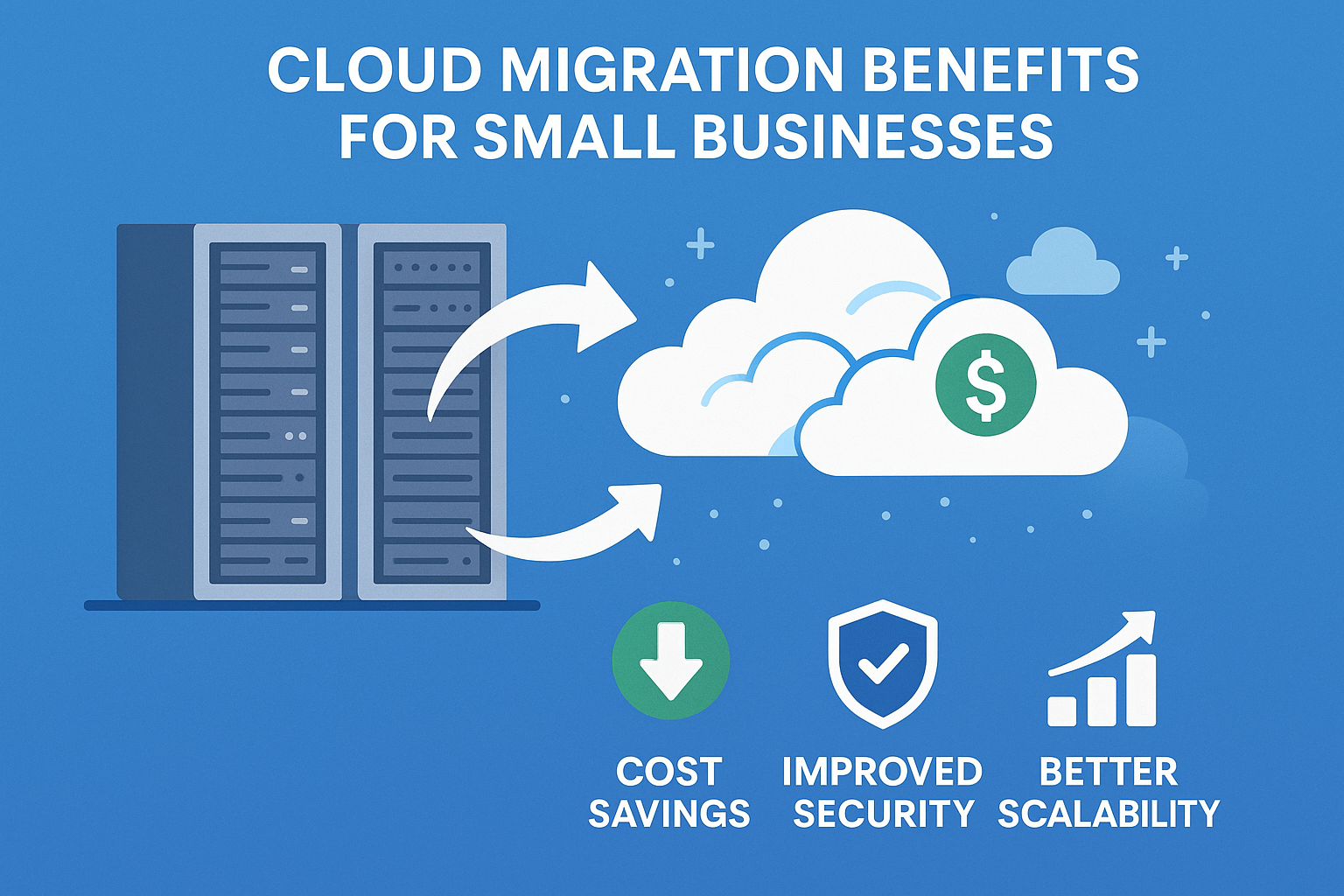
The Problem: Thinking Security Is Too Expensive
“We’re too small to be a target” and “enterprise security is out of our budget” are two phrases that make cybersecurity experts cringe. Small businesses are actually more likely to be targeted by cybercriminals because they typically have weaker defenses.
The average cost of a data breach for small businesses is $2.98 million, far more than most companies spend on security in a decade. Yet many business owners still view cybersecurity as an optional expense rather than essential insurance.
The Solution: Layered Security on Any Budget
You don’t need enterprise-level budgets to implement enterprise-level security. The key is building layered defenses that make your business a harder target than your competitors.
Layer 1: Basic Hygiene (Low Cost, High Impact)
– Strong password policies – Require complex passwords and regular changes
– Multi-factor authentication – Add this to all critical business applications
– Regular software updates – Keep operating systems and applications current
– Employee training – Teach staff to recognize phishing and social engineering
– Secure Wi-Fi – Use WPA3 encryption and separate guest networks
Layer 2: Proactive Monitoring (Moderate Cost, High Value)
– Endpoint protection – Advanced antivirus that monitors behavior, not just signatures
– Email filtering – Block malicious attachments and phishing attempts before they reach users
– Network monitoring – Detect unusual activity that might indicate a breach
– Regular backups – Automated, tested backups stored securely offsite
– Vulnerability scanning – Regular checks for security weaknesses
Layer 3: Advanced Protection (Higher Cost, Maximum Security)
– Security Operations Center (SOC) monitoring – 24/7 professional oversight
– Incident response planning – Detailed procedures for handling security events
– Compliance management – Ensure adherence to industry regulations
– Advanced threat detection – AI-powered systems that identify sophisticated attacks
– Cyber insurance – Financial protection against breach costs and business interruption
Budget-Friendly Security Strategies:
– Start with free tools – Microsoft Defender, Google’s security features, and other built-in protections
– Leverage cloud security – Cloud providers invest billions in security that small businesses can’t match
– Use managed security services – Share costs with other businesses through service providers
– Focus on employee training – Human error causes 95% of security breaches
– Implement security gradually – Build defenses over time rather than trying to do everything at once
Challenge 5: The Hidden Costs of DIY IT Management
The Problem: False Economy of Doing It Yourself
Many small business owners handle their own IT or assign technology responsibilities to employees whose primary job is something else entirely. On the surface, this seems cost-effective – you’re not paying for outside help, right?
The hidden costs of DIY IT include:
– Opportunity cost – Time spent on IT is time not spent on core business activities
– Inefficient solutions – Non-experts often choose expensive or inappropriate fixes
– Security vulnerabilities – Lack of specialized knowledge creates risks
– Scalability issues – Solutions that work for 5 employees may fail at 15
– Emergency expenses – When DIY solutions fail, emergency professional help costs more
The Solution: Strategic Use of Managed IT Services
Managed IT services aren’t just for large corporations. Modern MSPs (Managed Service Providers) offer flexible, scalable solutions that often cost less than hiring internal IT staff.
Cost Comparison: Internal IT vs. Managed Services
| Expense Category | Internal IT Specialist | Managed IT Services |
| Annual Salary | $45,000 – $65,000 | N/A |
| Benefits (30%) | $13,500 – $19,500 | N/A |
| Training & Certifications | $3,000 – $5,000 | Included |
| Software & Tools | $2,000 – $4,000 | Included |
| Total Annual Cost | $63,500 – $93,500 | $36,000 – $60,000 |
Beyond cost savings, managed services provide:
– Access to specialists – Network engineers, security experts, cloud architects
– 24/7 monitoring – Problems are often fixed before you notice them
– Predictable costs – Fixed monthly fees instead of variable emergency expenses
– Scalability – Services adjust as your business grows
– Latest technology – Access to enterprise-grade tools and expertise
Choosing the Right MSP Model:
– Co-managed IT – MSP handles specialized tasks while you maintain day-to-day support
– Fully managed – Complete IT outsourcing with on-site support as needed
– Project-based – Specific initiatives like cloud migration or security implementation
– Hybrid approach – Combination of internal resources and external expertise
Challenge 6: Energy Costs and Environmental Impact
The Problem: Technology’s Growing Energy Appetite
IT equipment can account for 10-20% of a small business’s electricity bill. As companies add more devices, servers, and always-on systems, energy costs continue to climb. Many business owners don’t realize how much their technology choices impact their monthly utility bills.
Energy-hungry IT equipment includes:
– Older servers and computers – Use 40-60% more power than modern alternatives
– Inefficient cooling systems – Server rooms that aren’t properly designed
– Always-on devices – Equipment that doesn’t power down during off-hours
– Oversized systems – More powerful hardware than actually needed
– Poor power management – Lack of automated sleep and hibernation settings
The Solution: Energy-Efficient Technology Strategies
Immediate Actions (No Cost)
– Enable power management – Configure computers to sleep when not in use
– Adjust server schedules – Power down non-critical systems during off-hours
– Optimize cooling – Raise server room temperature to 75-80°F (still safe for equipment)
– Consolidate devices – Use fewer, more powerful machines instead of many smaller ones
– Employee education – Teach staff to shut down equipment at the end of the day
Short-Term Investments (Quick ROI)
– LED lighting in server rooms and IT areas
– Smart power strips that eliminate phantom loads
– Energy-efficient monitors – ENERGY STAR certified displays
– Solid-state drives (SSDs) – Use less power and generate less heat than traditional hard drives
– Virtualization – Run multiple virtual servers on one physical machine
Long-Term Strategies (Maximum Impact)
– Cloud migration – Let cloud providers handle energy efficiency at scale
– Modern hardware – New equipment uses significantly less power
– Renewable energy – Solar panels or green energy programs
– Efficient cooling – Proper server room design and equipment placement
– Energy monitoring – Track usage to identify optimization opportunities
ROI Example: A small business replaced 20 desktop computers with energy-efficient models. The new computers cost $800 each ($16,000 total) but reduced electricity usage by $150 per month. Including improved productivity and reduced maintenance, the upgrade paid for itself in 18 months and continues saving money every year.
💰 IT Budget Optimization Calculator
Discover how much your business could save with strategic IT improvements
📊 Current IT Expenses
🏢 Business Information
💡 Your Optimization Opportunities
Ready to Take IT Off Your Plate?
Stop worrying about downtime, security risks, or endless IT frustrations. AlphaCIS is the trusted IT partner for small and mid-sized businesses in Metro Atlanta, keeping systems secure, connected, and running the way they should every day.
Whether it’s preventing costly outages, protecting your data, or giving your team unlimited support, we make sure technology helps your business grow instead of holding it back.
📅 Book Your Free ConsultationBuilding Your 2025 IT Budget Strategy
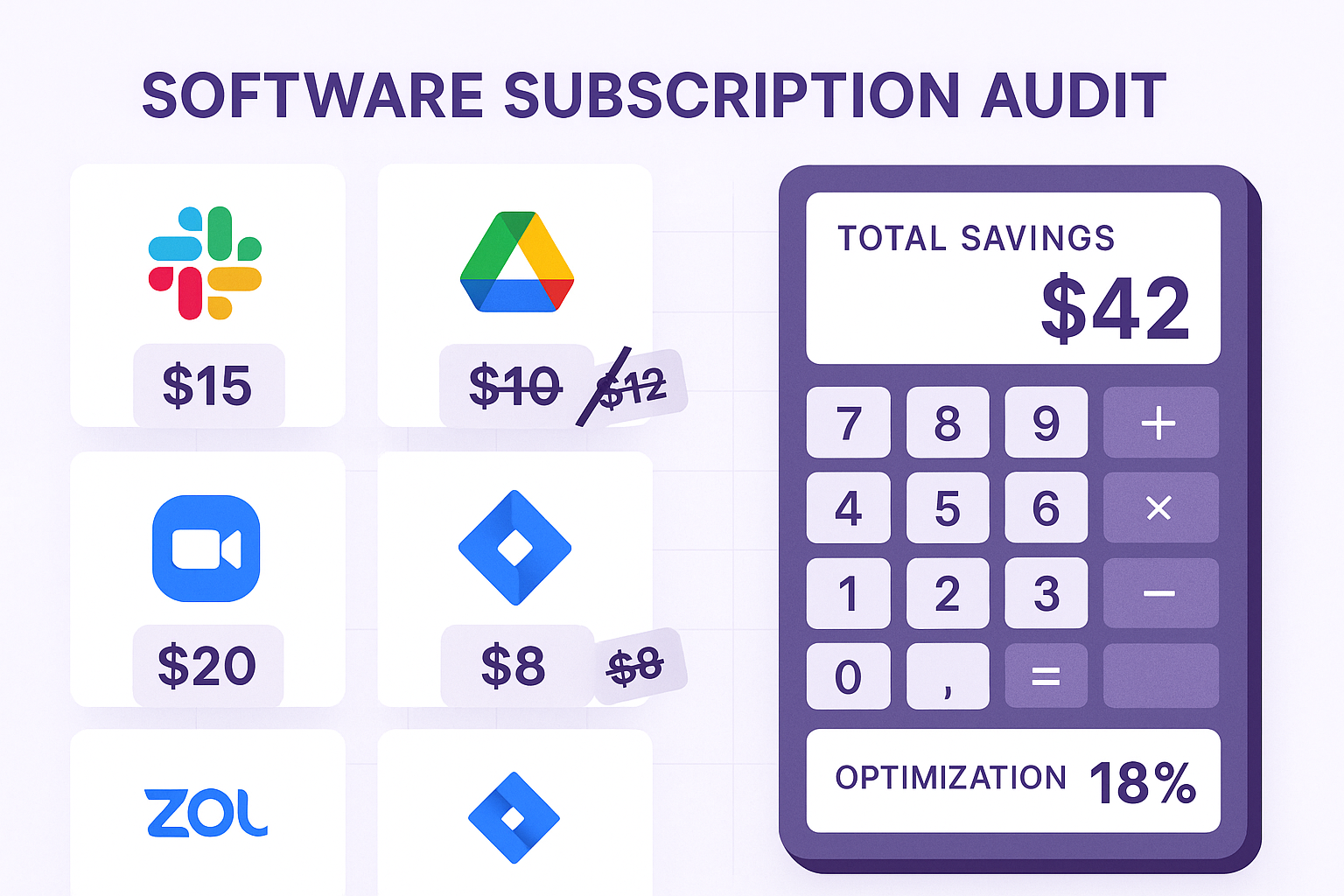
Now that we’ve covered the major cost optimization opportunities, let’s put it all together into a practical budgeting framework that you can implement immediately.
The 80/20 IT Budget Rule
Smart businesses allocate their IT budgets using the 80/20 principle:
– 80% on strategic initiatives that drive growth and efficiency
– 20% on maintenance and emergency reserves
This is the opposite of how most small businesses actually spend their IT dollars. Reactive companies often spend 80% on fixing problems and only 20% on improvements.
Monthly IT Budget Categories
Essential Operations (40-50% of budget)
– Cloud services and software subscriptions
– Internet and telecommunications
– Basic security and backup services
– Core hardware maintenance
Strategic Growth (30-40% of budget)
– New software implementations
– Hardware upgrades and replacements
– Employee training and development
– Process automation tools
Security and Compliance (10-15% of budget)
– Advanced security tools
– Compliance management
– Incident response planning
– Security training and awareness
Emergency Reserve (5-10% of budget)
– Unexpected hardware failures
– Security incident response
– Urgent software needs
– Temporary staffing or consulting
Creating Your Optimization Timeline
Month 1-2: Assessment and Planning
– Complete software audit and inventory
– Assess current infrastructure age and performance
– Calculate true costs, including energy and downtime
– Identify quick wins and long-term projects
Month 3-4: Quick Wins Implementation
– Optimize software subscriptions and eliminate redundancies
– Implement power management and energy-saving measures
– Establish basic security hygiene practices
– Begin cloud migration planning
Month 5-8: Strategic Improvements
– Execute cloud migration for appropriate applications
– Replace most problematic hardware
– Implement managed services for specialized needs
– Enhance security with layered defenses
Month 9-12: Optimization and Scaling
– Monitor and adjust cloud resource allocation
– Complete infrastructure modernization
– Implement advanced automation and monitoring
– Plan for next year’s strategic initiatives
Measuring Your IT ROI
To ensure your optimization efforts are working, you need to track the right metrics:
Financial Metrics
– Total Cost of Ownership (TCO) – All costs associated with technology over its lifetime
– Cost per employee – Monthly IT expenses divided by the number of employees
– Downtime costs – Lost productivity due to technical issues
– Energy efficiency – Power consumption per device or service
– Emergency vs. planned expenses – Ratio of reactive to proactive spending
Performance Metrics
– System uptime – Percentage of time systems are available and functioning
– Response times – How quickly applications and systems respond to user requests
– User satisfaction – Employee feedback on technology performance and support
– Security incidents – Number and severity of security events
– Backup success rates – Percentage of successful backup operations
Business Impact Metrics
– Productivity improvements – Time saved through better technology
– Revenue enablement – New business opportunities created by technology
– Competitive advantage – Capabilities that differentiate your business
– Scalability – Ability to handle growth without proportional IT cost increases
– Compliance status – Meeting industry and regulatory requirements
Common IT Budgeting Mistakes to Avoid
Mistake 1: Focusing Only on Upfront Costs
Many businesses choose the cheapest option without considering long-term expenses. A $500 computer that needs to be replaced every two years costs more than a $1,000 computer that lasts five years.
Mistake 2: Ignoring Hidden Costs
Software licensing, training, integration, and ongoing support can double the apparent cost of new technology. Always calculate the total cost of ownership.
Mistake 3: Delaying Security Investments
“We’ll add security later” is a dangerous mindset. Building security into your infrastructure from the beginning is much cheaper than retrofitting it after a breach.
Mistake 4: Over-Engineering Solutions
Small businesses don’t need enterprise-grade everything. Choose solutions that match your current needs with room to grow, not systems designed for companies 10x your size.
Mistake 5: Neglecting Employee Training
The best technology is worthless if your team doesn’t know how to use it effectively. Budget 10-15% of any technology investment for training and change management.
Future-Proofing Your IT Budget
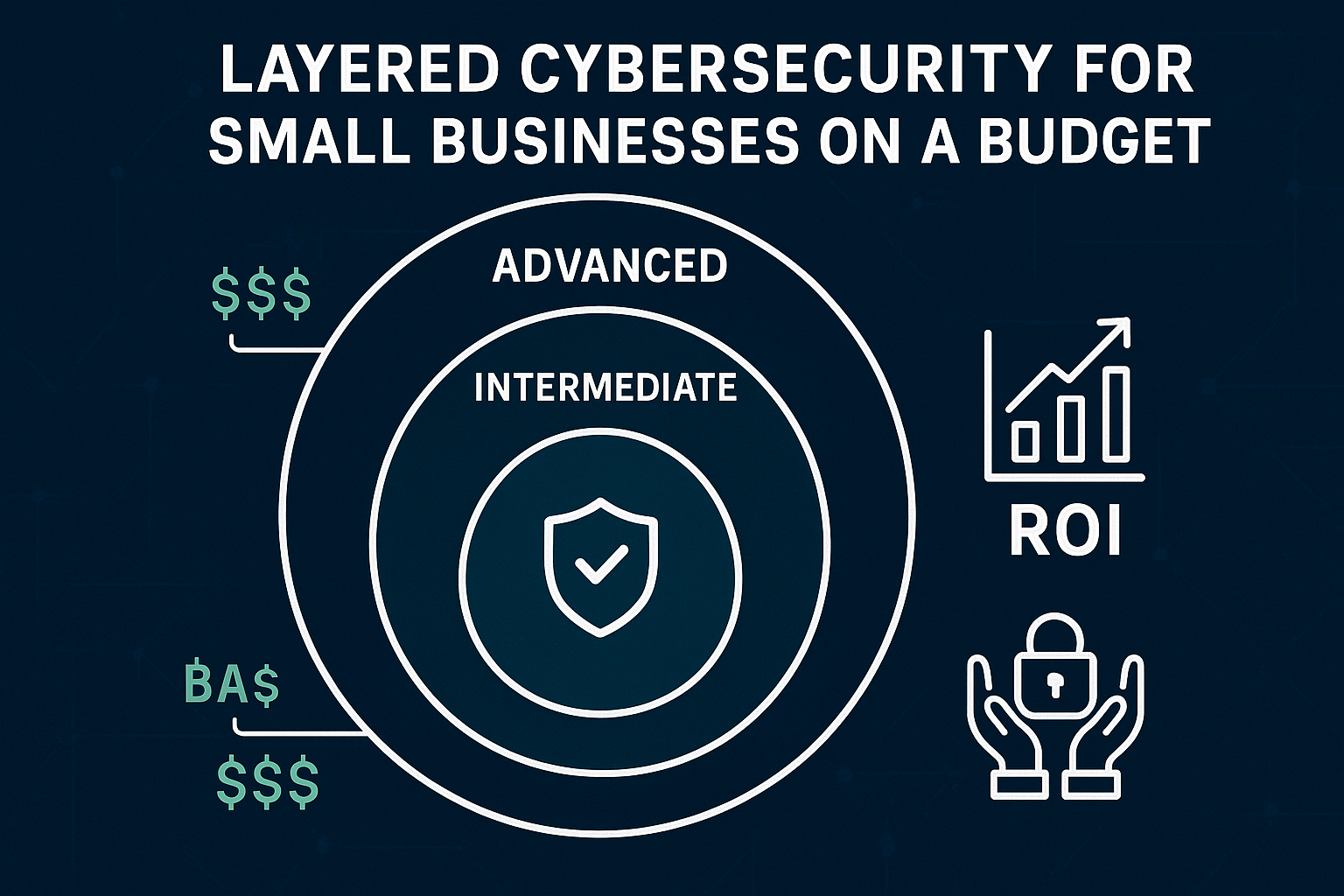
Emerging Technologies to Watch
Artificial Intelligence and Automation
– Customer service chatbots
– Automated data entry and processing
– Predictive maintenance for IT systems
– Intelligent security monitoring
Edge Computing
– Faster processing for remote locations
– Reduced bandwidth costs
– Improved reliability for critical applications
– Better performance for real-time applications
5G and Enhanced Connectivity
– Faster mobile internet for remote work
– IoT device connectivity
– Enhanced video conferencing and collaboration
– New business model opportunities
Quantum-Resistant Security
– Preparing for post-quantum cryptography
– Enhanced data protection methods
– Future-proof security investments
– Compliance with evolving regulations
Building Flexibility into Your Budget
Modular Approach
Choose technologies that can be easily expanded or modified as your business grows. Avoid monolithic systems that require complete replacement when you outgrow them.
Subscription vs. Purchase Decisions
For rapidly evolving technologies, subscriptions often provide better value and flexibility than purchases. For stable, long-term needs, purchasing may be more economical.
Vendor Diversification
Don’t put all your technology eggs in one vendor’s basket. Maintain relationships with multiple providers to ensure competitive pricing and avoid vendor lock-in.
Regular Review Cycles
Schedule quarterly budget reviews to assess performance, identify new opportunities, and adjust spending priorities based on business changes.
Taking Action: Your Next Steps
Immediate Actions (This Week)
- Conduct a software audit – List all subscriptions and their usage
- Calculate your current IT costs – Include all technology-related expenses
- Identify your biggest pain points – What causes the most downtime or frustration?
- Research quick wins – Look for immediate optimization opportunities
Short-Term Goals (Next 30 Days)
- Eliminate redundant subscriptions – Cancel or consolidate overlapping tools
- Implement power management – Configure energy-saving settings on all devices
- Establish security basics – Enable multi-factor authentication and update passwords
- Create an emergency fund – Set aside 5-10% of your IT budget for unexpected expenses
Long-Term Strategy (Next 6-12 Months)
- Develop a cloud migration plan – Identify applications and data to move to the cloud
- Plan infrastructure upgrades – Replace aging hardware on a strategic timeline
- Evaluate managed services – Consider outsourcing specialized IT functions
- Invest in employee training – Ensure your team can maximize technology investments
Conclusion
IT budgeting for 2025 isn’t about spending less; it’s about spending smarter. The most successful Atlanta businesses I work with have learned that strategic technology investments actually reduce costs while improving performance, security, and competitive positioning.
The key is shifting from reactive to proactive thinking. Instead of waiting for systems to break, plan replacements before they’re needed. Instead of buying software as problems arise, audit your current tools and optimize before adding new ones. Instead of handling IT emergencies as they happen, invest in prevention and monitoring.
Remember Sarah’s marketing agency from the beginning of this article? After implementing the strategies we’ve discussed, she reduced her monthly IT costs from $8,000 to $5,200 while actually improving system performance and reliability. Her team is more productive, her data is more secure, and she sleeps better knowing that her technology supports her business instead of draining it.
The same transformation is possible for your business. Start with the quick wins – software optimization and energy efficiency then build toward longer-term improvements like cloud migration and infrastructure modernization.
Your IT budget should be an investment in your company’s future, not a necessary evil that drains your resources. With the right strategy, you can cut costs without cutting corners, positioning your business for growth and success in 2025 and beyond.
Ready to Take IT Off Your Plate?
Stop worrying about downtime, security risks, or endless IT frustrations. AlphaCIS is the trusted IT partner for small and mid-sized businesses in Metro Atlanta, keeping systems secure, connected, and running the way they should every day.
Whether it’s preventing costly outages, protecting your data, or giving your team unlimited support, we make sure technology helps your business grow instead of holding it back.
📅 Book Your Free Consultation
Dmitriy Teplinskiy
I have worked in the IT industry for 15+ years. During this time I have consulted clients in accounting and finance, manufacturing, automotive and boating, retail and everything in between. My background is in Networking and Cybersecurity
